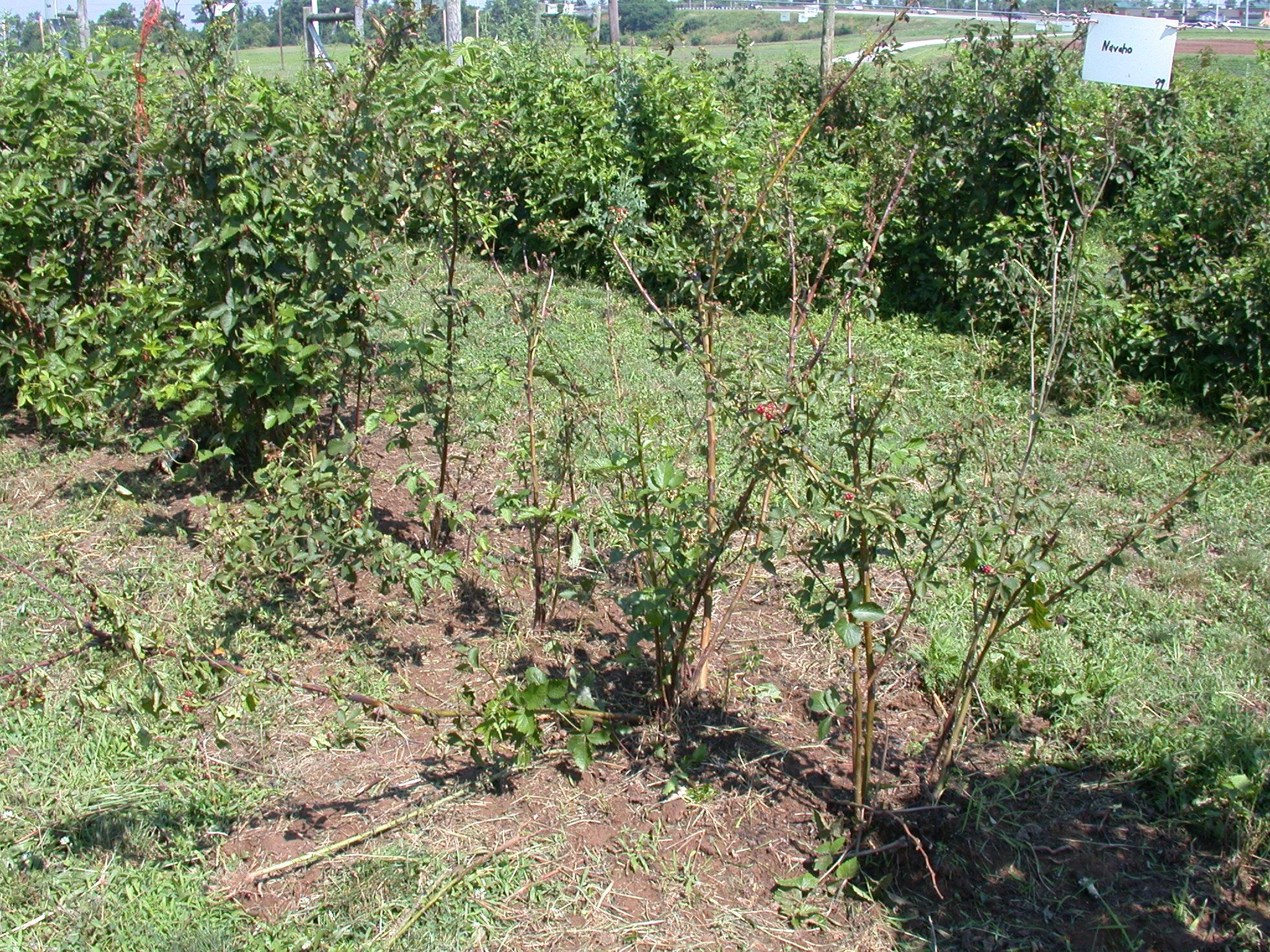Raspberry Crown Borer on Brambles
Return to Insects and Other Arthropod Pests
Raspberry crown borer (Pennisetia marginata) adults are clearwing moths that resemble yellowjacket wasps; except that raspberry crown borer moths are hairy (wasps do not have hairs). Eggs are laid singly on undersides of leaves in mid- to late summer and hatch 1 to 2 months later. Larvae are white with dark, reddish heads, and reach 1¼ inches long when mature. Emerging larvae crawl down canes to just under the soil line where they tunnel into stems to overwinter; blisterlike areas develop at these sites. Damaged roots and crowns result in weak spindly growth, reduced leaf size, and premature death of canes. Indications of borer activity include sawdust-like frass (insect fecal matter) and/or swelling at the base of infested canes or tunnels in the canes (often noticed while pruning). Crown borer has a 2-year life cycle in Kentucky.

Weakened canes with poor growth due to raspberry crown borer.
(Photo: Ric Bessin, University of Kentucky)

Larva boring into a cane (note frass at arrow).
(Photo: Ric Bessin, University of Kentucky)

Adult raspberry crown borer (notice its resemblance to a yellowjacket wasp).
(Photo: UGA Plant Pathology, University of Georgia)
Management:
- Remove wild brambles from the surrounding area.
- Prune and destroy infested canes.
- Apply insecticides in September.
